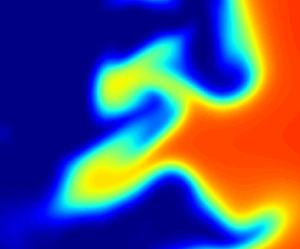No CrossRef data available.
Article contents
Revisiting the modelling framework for the unresolved scalar variance
Published online by Cambridge University Press: 25 March 2024
Abstract

The unresolved scalar variance in large-eddy simulations of turbulent flows is a fundamental physical and modelling parameter. Despite its importance, relatively few algebraic models have been developed for this important variable with the most prominent models to date being the classic scale-similarity and gradient models. In this work a new generalized modelling framework based on reconstruction has been developed, which in contrast to classic modelling approaches allows the construction of base static variance models of arbitrary accuracy. It is demonstrated that higher-order reconstructions naturally lead to base static variance models of increased accuracy, and that the classic scale-similarity and gradient models are subsets of more general and higher-order models. The classic scale-similarity assumption for developing dynamic models is also revisited, and it is demonstrated that this can essentially be reinterpreted as a two-level reconstruction approach. Based on this result, a new general methodology is proposed that allows the construction of dynamic models for any given base static model, and a corresponding general reconstruction operator, algebraic or iterative. Consequently, improved static and dynamic models for the scalar variance are developed. The newly developed models are then thoroughly tested a priori using two high-fidelity direct numerical simulation databases corresponding to two substantially different flame and flow configurations, and are shown to outperform classic algebraic models for the variance.
- Type
- JFM Papers
- Information
- Copyright
- © The Author(s), 2024. Published by Cambridge University Press





